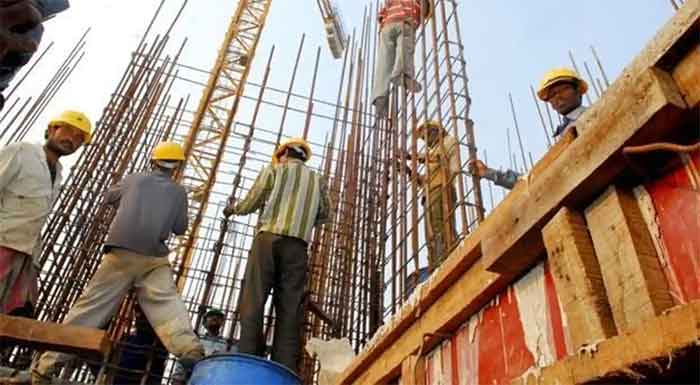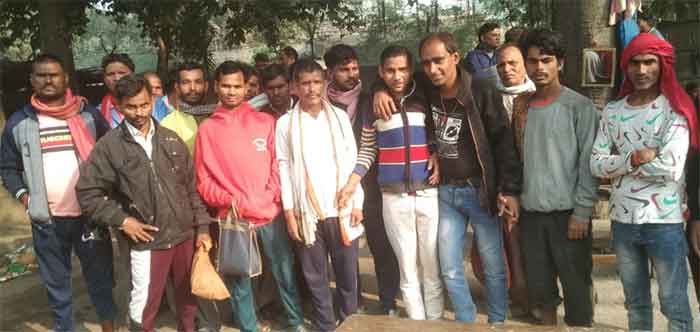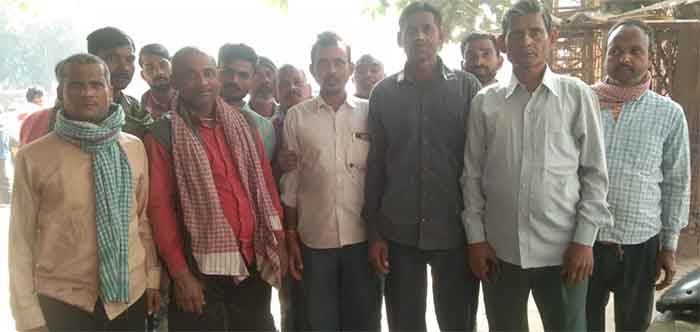Arun Mallik, who was over sixty, was a guard in our society, which was a gated community in Delhi. He was often seen pushing the larger vehicles to rearrange them or creating room for other vehicles to pass. He was expected to oversee the security of the community during his 12-hour shift, as well as any packages, individuals, or items entering or leaving the community. He did this job in the extreme weather of Delhi, whether it was the scorching 45 degrees or freezing 3 degrees during winters.
Particularly on summer afternoons and winter nights, pushing an automobile is not a simple chore. In addition to overseeing the children’s safety, his duties included keeping track of the housekeeping staff’s attendance records and gathering monthly subscriptions. The contractor would take out a twenty-five hundred commission from his ten thousand pay. Shortly before this Diwali, he had a brain attack after working for over ten years in our gated neighborhood.
He was replaced by a new guard the very following day.
In terms of economics, individuals such as Maliik from Bihar belong to the unorganized sector. According to one of his acquaintances and coworkers, the cerebral attack was brought on by an excessive workload at this age. As sole breadwinner for the family, he had to continue his job as his son had lost his job during COVID. Sadly Two days back on 24th November 2023,he succumbed to a cerebral attack.
This is the not an unusual story but rather a story of almost every migrant worker, who migrates to big cities in search of livelihood.
As per the Report Migration in India, 2020-21, based on Periodic Labour Force Survey
(PLFS) 2020-21, released by the Ministry of Statistics and Programme Implementation (MoSPI), the total migration rate in India was 28.9% and in rural area the migration was 26.5% . Mr Mallick who died struggling day in and day out for a living and supporting their families back in their home town something a kind of remittance.
According to the report, out of the total migrant persons, around 10.8% of persons were migrated due to employment-related reasons. ILO 2020 reports that migrant worker contributes 10% of GDP. In other words, the burgeoning metros of the new India essentially thrives on migrant (read cheap) labors. One may put a simple question. Being an ‘agrarian society’ where seventy per cent population is involved with the profession of agriculture what the ‘rural migrant’ people are supposed to do in the cities? Remember they are not re-skilled to fulfil the demand of the need of a city. In that case the rural migrant person, who was technically a sound agriculturist,is forced to become a labourer or other menial work. Security guard of a gated community is one of them where you don’t need any qualification per se and because of that people like Mallick got a job in the first place in such a ripen age. This is the rosy picture. This is the dismal bit. Mr. Mallick, who is over sixty years old, would ordinarily be able to collect a pension and lead a pleasant retirement, but “thanks” to privatization, which weakens all labor rules in the name of liberalization. The word “salary” in our modern day just refers to your personal negotiating ability. Pay commissions, wage boards, and “structured salaries” are either non-existent or limited to the organized sector, which employs fewer than 10% of the labor force. People such as Mallik might be viewed as the so-called “invisible hand of the economic prosperity” behind the urban middle class’s expansion.
Needless to say, these workers join the menial and hazardous jobs as sewage cleaners, construction workers, domestic maids, rickshaw pullers, car cleaners, roadside vendors, hawkers, car cleaners, factory workers, etc which form the booming unorganized sector. Starting from housing problems to health and food security they face all the adversities of life in the new cities they have migrated to in search of a ‘decent’ living standards.
But at what cost? In terms of the economy, these migrant workers effectively “subsidized” our pay. Consider our case study from earlier, Mr. Mallik, or all of the “safaiwalas.” They are all hired by the contractor, a third-party service provider with a relationship to the local welfare societies. The monthly payments made by the inhabitants cover the cost of these services as well as the salaries of the plumbers, security guards, and safaiwals, among others. We used to pay a guard between eight and ten thousand rupees a month. In the organized sector, the Pay Level 4 salary range is as follows: Rs 25,500 to Rs 81,100. Based on the government-approved scale, residents are required to contribute far more than what they do now. Put another way, those like Mr. Mallik are subsidizing us and we are the “beneficiaries” of the privatization.
They are forced to live in slums due to the high expense of living in cities, where they are subjected to additional risks such as open drainage, a lack of power and water, infections, and other problems.
They are also excluded from any advantages and social security. Technical obstacles prevent some of them from taking advantage of the various benefits of such programs and provisions, even if they are able to obtain their Adhar cards—the prerequisite for being eligible as beneficiaries for public provisions.
For these migrant workers, who are already perplexed concerning their new life as migrant workers, establishing their identification as APL card holders becomes a tremendous task.
Even though they have helped the city’s economy grow, they are still seen as the undesirable population and are held responsible for the dirty metropolis. Although their contribution to carbon emissions is almost minimal, they are held accountable by the wealthy for being the city’s polluters and suffer the most as a result of carbon emissions.
The enormous flow of migrant workers returning to their hometowns during COVID-19 exposed the widespread predicament of migrant workers. The coronavirus epidemic has made the serious shortcomings in the country’s policies clear to us.
Individuals like Mr. Mallick continue to fade away unacknowledged, draining their last drop of blood to support the prosperous growth of bourgeois. The exploitation continues as another migrant worker takes his position.
Dr Trishna Sarkar, Asst Prof, Dept of Economics, Dr BhimRao Ambedkar College, University of Delhi.
















































